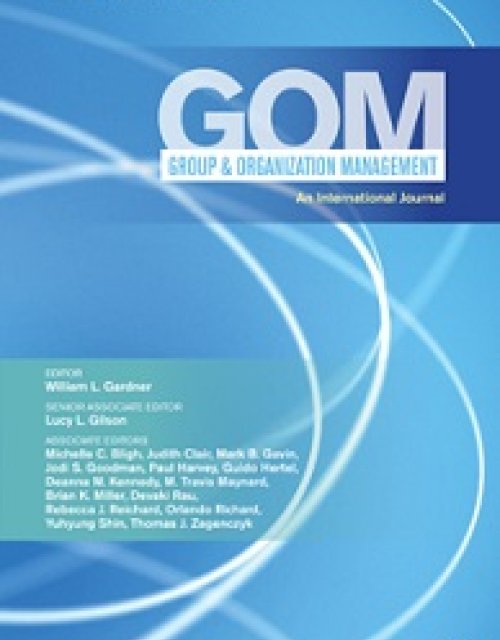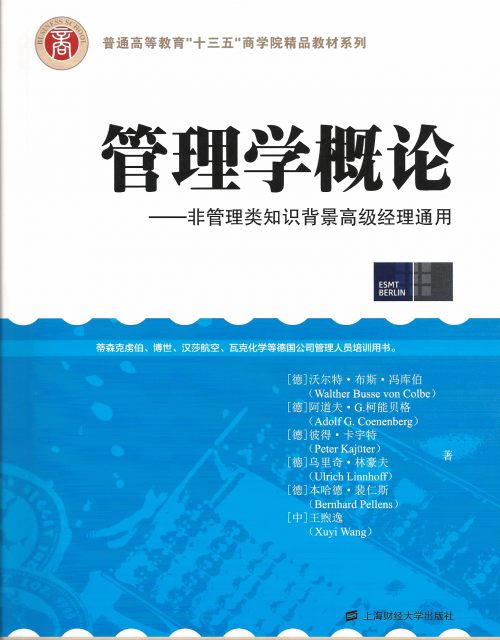Publication records
Subject(s)
Management sciences, decision sciences and quantitative methods
Keyword(s)
Shapley value, potential, random partition, concentration of power, communication graph, fairness, efficiency, efficient extension, fair extension, Myerson value
JEL Code(s)
C71, D60
We study values for TU games with a communication graph (CO-values). In particular, we show that CO-values for connected graphs that are fair and efficient allow for a unique efficient and fair extension to the full domain.
With permission of Elsevier
Volume
146
Journal Pages
103–106
Subject(s)
Human resources management/organizational behavior
Keyword(s)
Crowdsourcing science, replication, reproducibility, research transparency, methodology, meta-science
This crowdsourced project introduces a collaborative approach to improving the reproducibility of scientific research, in which findings are replicated in qualified independent laboratories before (rather than after) they are published. Our goal is to establish a non-adversarial replication process with highly informative final results. To illustrate the Pre-Publication Independent Replication (PPIR) approach, 25 research groups conducted replications of all ten moral judgment effects which the last author and his collaborators had “in the pipeline” as of August 2014. Six findings replicated according to all replication criteria, one finding replicated but with a significantly smaller effect size than the original, one finding replicated consistently in the original culture but not outside of it, and two findings failed to find support. In total, 40% of the original findings failed at least one major replication criterion. Potential ways to implement and incentivize pre-publication independent replication on a large scale are discussed.
With permission of Elsevier
Volume
66
Journal Pages
55–67
Subject(s)
Ethics and social responsibility; Human resources management/organizational behavior
Keyword(s)
Corporate social responsibility, corporations, environmental sustainability, human capital, shared value, socially responsible business
Volume
14
Journal Pages
34–39
Subject(s)
Information technology and systems
Keyword(s)
Hardware Trojans, malicious hardware, layout modifications, bug attacks
Journal Pages
625–647
Subject(s)
Finance, accounting and corporate governance
Keyword(s)
Fair value, financial instruments, value relevance, banks
JEL Code(s)
M41, N20
This paper investigates whether, and if so, to what extent, Level 3 fair values disclosed by European banks provide useful information to investors and are reflected in firm value changes. Using a unique sample of 416 hand-collected firm-year observations from European banks reporting under IFRS, in contrast to previous research conducted in the US, we find no overall evidence that changes in Level 3 fair values are associated with changes in firm value. However, the value relevance of Level 3 fair values depends on the category assigned to financial instruments. Level 3 fair values that are held for trading are reflected in firm value. Further analyses suggest that this effect is driven predominantly by banks that operate in market-based economies and hire audit firms with deep industry expertise
At the author's request the PDF file of this working paper was removed. Please contact the authors for further information.
View all ESMT Working Papers in the ESMT Working Paper Series here. ESMT Working Papers are also available via SSRN, RePEc, EconStor, and the German National Library (DNB).
Pages
58
ISSN (Print)
1866–3494
Subject(s)
Human resources management/organizational behavior
Keyword(s)
Team adaptiveness, patterned team interactions, in-process planning, dynamic situations, simulation
Previous research asserts that teams working in routine situations pass through performance episodes characterized by action and transition phases, while other evidence suggests that certain team behaviors significantly influence team effectiveness during nonroutine situations. We integrate these two areas of research—one focusing on the temporal nature of team episodic performance and the other on interaction patterns and planning in teams—to more fully understand how teams working in dynamic settings successfully transition across routine and nonroutine situations. Using behavioral data collected from airline flight crews working in a flight simulator, we find that different interaction pattern characteristics are related to team performance in routine and nonroutine situations, and that teams engage in more contingency, in-process planning behavior during routine versus nonroutine situations. Moreover, we find that the relationship between this in-process planning and subsequent team adaptiveness is curvilinear (inverted U-shaped). That is, team contingency or in-process planning activity may initially increase team adaptiveness, but too much planning has adverse effects on subsequent performance.
With permission of SAGE Publishing
Volume
41
Journal Pages
491–525
ISSN (Online)
1552-3993
Subject(s)
Human resources management/organizational behavior; Management sciences, decision sciences and quantitative methods
Secondary Title
Lexikon Qualitätsmanagement
Edition
2nd ed.,
Pages
315–318
ISBN
978-3-486-58465-3
Subject(s)
Economics, politics and business environment
Keyword(s)
School feeding, learning, midday meal, primary school education
JEL Code(s)
I210, I250, O120
Subject(s)
Strategy and general management
Keyword(s)
Accounting, finance, capital budgeting, M&A, value based management, controlling
JEL Code(s)
M10
沃尔特·布斯·冯库伯、阿道夫·g.柯能贝格、 彼得·卡宇特、乌里奇·林豪夫、本哈德·裴仁斯等 、王煦逸所*的《管理学概论--非管理类知识背景高 级经理通用》一书,**部分介绍了企业管理的理念 ,基于这些理念,企业能够在市场竞争中立足,这里 涉及企业环境分析和由此得出的企业战略、客户导向 以及资方导向。面对急剧变化的市场环境,企业必须 做出反应,对企业的结构和流程做出有针对性的调整 。第二部分将介绍有关的措施:法律形式的选择、公 司治理、组织构架等。*后,本书论及财务方面的论 题:成本管理、投资核算、兼并重组管理、财务管理 、价值导向效益分析以及财务报告(第三和第四部分 )?br/> 本书按照模块化组织:每章都是一个独立的单元 ,可以在不涉及其他章节的情况下独立阅读。同时, 各模块之间又存在有机的联系。每章所附的习题帮助 读者加深对于各专题的理解?br/> 本书的目标读者是中国非管理类知识背景的企业 经理,他们希望通过自学、emba项目的学习或者专项 培训研读管理核心思想、方法和工具等。此外,本书 也有助于有多年管理经验的专家*新管理知识。通过 本书,读者可以得到有关企业管理方面系统的经验导 向概观。本书基于西欧企业管理的基本理念,并通过 德国的案例进行通俗易懂的阐述?br/>
Volume
1st ed.,
Pages
436
ISBN
978-7-5642-2406-6

